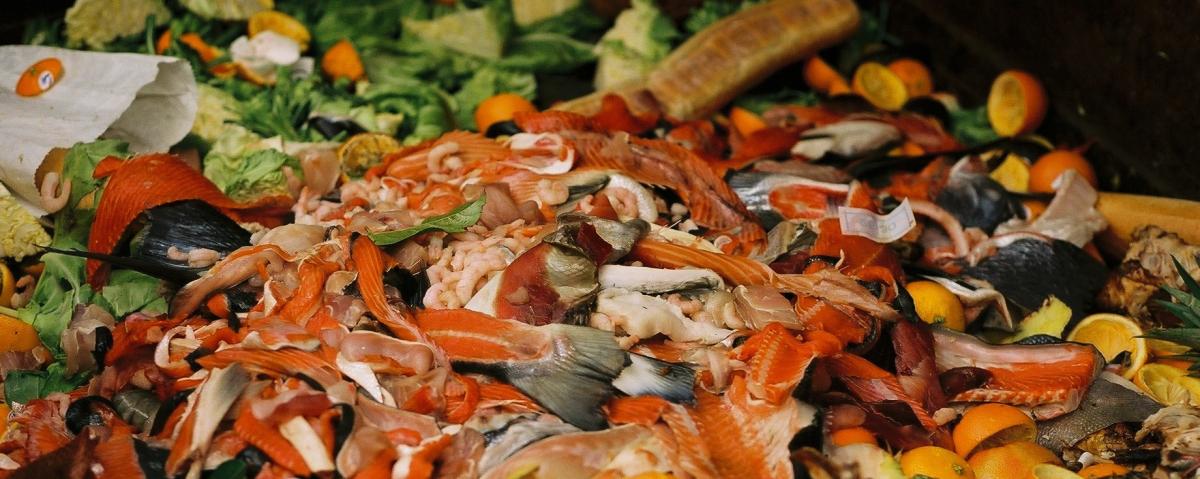
This Spring, UW Recycling staff guest-taught students in the Nutritional Sciences 302 Food Systems class - led by faculty member Yona Sipos - regarding the composting process and how to sort compostable materials on campus. The students were then given an assignment to think about ways the University of Washington could reduce food waste.
We've included a selection of the student thoughts below:
There are several ways in which the University of Washington could help reduce food waste on campus. First, the UW could provide more microwaves around campus. This would encourage students to bring their own food from home in tupperware containers, instead of purchasing food on campus and throwing away what they don’t eat. Additionally, UW dining halls and other restaurants could offer discounts on food to students who bring their own reusable tupperware containers from home, similar to how starbucks offers discounts to customers who bring their own reusable mugs. By encouraging students to bring tupperware containers and/or food from home, UW would reduce the amount of single use cutlery and plates being discarded and also encourage students to take home whatever food they do not finish, therefore reducing the amount of food that is thrown away.
- Morea Daley
What will it take to make reusable coffee mugs on our campus the norm? Coffee is a daily ritual and runs through the students’ bloodstreams daily, yet there is little thought or consideration to how this ritual is contributing to our campus waste. Single-use disposable cups on campus have become a spitting image of the throwaway culture we have created here at the UW. To combat this culture, we need to implement a campaign that advocates for the use of reusable coffee mugs. Under the slogan “Conscious Cup” with a tag line of “BYOC” (bring your own cup) we can reject this throwaway culture and initiative change throughout our campus. With social media such a prominent tool in today’s day and age we could create an Instagram handle that posts pictures of students bringing their own mugs in hopes of encouraging other students to support the movement. Choose to reuse!
- Molly Evans
One suggestion is to start one day a week that is focused on sustainability in the dining halls. For example, the dining halls could participate in a "Sustainability Sunday" where one of the options is made from food that might otherwise be wasted. Some ideas of foods that UW could serve during their sustainable dining day are banana bread made from over-ripened bananas, French toast made from stale or less fresh bread, or a vegetable soup made from all the veggies that weren’t used that week and might otherwise be thrown out. There could also be a bulletin board where a different way to preserve food is posted each week, such as using food in multiple meals or refrigerating leftovers from the dining hall for another meal. This way students could get involved introducing to the idea of reducing their food waste and feel like they are participating in reducing the overall food waste at UW. Students could also volunteer to be present at the sustainable dining day and help by handing out to go containers for students to pack leftovers, as well as directing students on the correct waste bins for their food and food packaging.
- Julia Mikulikova
I recommend UW implement a "discount dinner program." As a student who had an on-campus meal plan, I realized on-campus dining places normally dump out leftover food after serving time. This on-campus food waste contributes to the 160 billion pounds of food waste created annually in this country. A discount dinner program could provide discounts on leftover food 15 minutes before serving time ends. Since students tend buy cheaper food due to lower income, this program will effectively motivate people to purchase leftover foods instead of seeing them being thrown away. That way UW can achieve the purpose of reducing on-campus food waste.
- Carrie Hsueh
One way in which the University of Washington can reduce food waste is getting rid of the use of trays in dining halls. Using this food waste reduction strategy will decrease the food that gets thrown in the trash. According to the 2018 Waste Characterization Study done by the University of Washington, 43% of food goes in the trash. Without a tray, students only take the food they can carry to bring back to a table or dorm room. This will allow students to make conscious choices about what they can finish eating. The uneaten food can then be recovered and served to those in need through already existing food waste reduction projects, including Any Hungry Husky and Food Lifeline.
- Valerie McNolty
The student dining and food services should implement a software system that records how much food is made, how much is sold, and which items are students’ favorites. By recording this data, the system can reduce overproduction with items that students may not purchase as often as some other items available. By embedding a system that can identify which foods the students like the most, they can shift overproduction in one area of food to one where students would find much more beneficial and ultimately reduce the amount of food wasted.
- Brendan Welzien
Photo by Flickr user Taz used under a Creative Commons license.